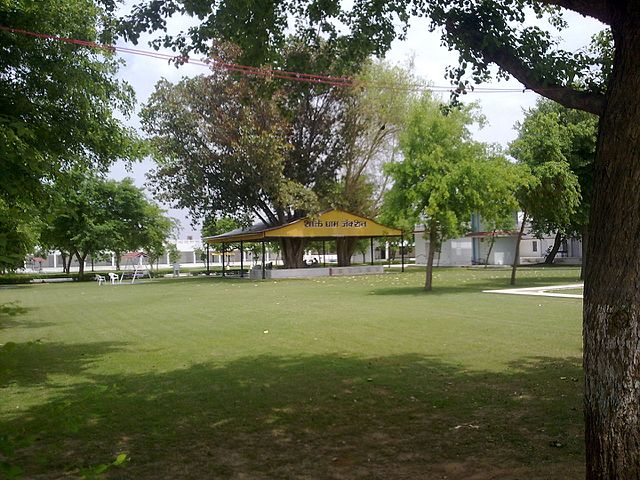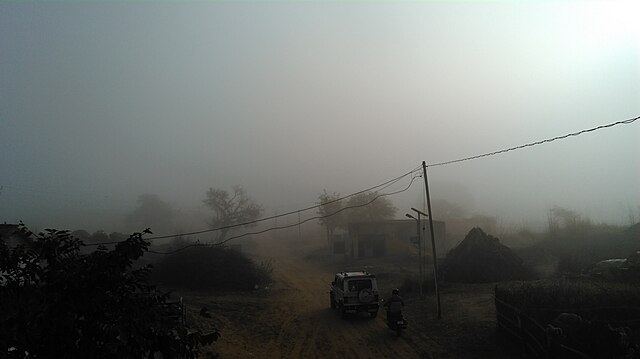Ever wondered what it’s like to experience the weather in Jhunjhunu, a gem in the heart of Rajasthan? This vibrant city, known for its rich history and stunning havelis, has a climate as dynamic as its culture. Jhunjhunu’s temperature swings like a pendulum, from scorching summer highs to chilly winter lows, shaped by its desert surroundings. Whether you’re planning a visit or just curious about what the weather has in store, this guide dives deep into Jhunjhunu’s temperature trends, seasonal quirks, and practical tips to make the most of your time here. Let’s unpack the climate of this fascinating city!
Understanding Jhunjhunu’s Geographical Influence on Temperature
Jhunjhunu sits at an elevation of about 319 meters above sea level, nestled in the semi-arid Shekhawati region of Rajasthan. Its location in northwestern India means it’s no stranger to extreme weather. The Thar Desert’s influence looms large, bringing intense heat in summer and cool, crisp nights in winter. The city’s flat terrain and sparse vegetation amplify temperature fluctuations, making it feel like you’re stepping from a furnace into an icebox depending on the season. Curious about how this geography shapes daily life? It’s all about adapting to the rhythm of the desert!
The Role of Rajasthan’s Desert Climate
Rajasthan’s desert climate is the puppet master pulling the strings on Jhunjhunu’s weather. With low humidity and minimal rainfall, the region experiences dramatic temperature shifts. Daytime can feel like you’re baking under the sun, while nights offer a refreshing reprieve. This contrast is most pronounced in summer and winter, where the temperature can vary by 20°C or more in a single day. It’s like living in two different worlds within 24 hours!
Jhunjhunu Temperature Overview for 2025
As we step into 2025, Jhunjhunu’s temperature continues to follow its classic desert pattern. Expect highs ranging from 33°C to 38°C in early July, with lows dipping to around 26°C at night. The monsoon season, which typically peaks in July and August, brings occasional relief with light showers, but don’t expect a downpour. The year-round climate is a mix of extremes, so let’s break it down season by season to give you a clear picture.
Summer in Jhunjhunu: A Fiery Affair
Summer in Jhunjhunu, from March to June, is like walking into an oven. Temperatures often soar above 40°C, with peaks occasionally hitting 45°C or more. The sun blazes relentlessly, and the dry heat can feel like a wall of fire. Locals know to stay hydrated and seek shade during the hottest hours. If you’re visiting, think of summer as a test of endurance—pack light clothes, sunscreen, and a trusty water bottle. Ever tried sipping chai under a scorching sun? It’s a Jhunjhunu rite of passage!
Tips for Surviving Jhunjhunu’s Summer Heat
Beating the summer heat in Jhunjhunu is all about strategy. Wear loose, breathable fabrics like cotton to stay cool. Plan outdoor activities for early morning or late evening when the sun isn’t at its peak. And don’t underestimate the power of a good hat—it’s your personal umbrella against the desert sun. Locals often swear by lassi, a refreshing yogurt drink, to keep cool. Want to blend in? Grab a glass and sip like a pro.
Monsoon Magic: July to September
Come July, the monsoon arrives, bringing a welcome change to Jhunjhunu’s temperature. Daytime highs drop to around 33–36°C, and the occasional rain showers cool things down. However, don’t expect Mumbai-level downpours—Jhunjhunu’s rainfall is modest, averaging about 6 inches in July. The humidity spikes, making it feel sticky, but the greenery that pops up in the desert is worth it. It’s like the city gets a fresh coat of paint!
What to Expect During Monsoon Season
The monsoon in Jhunjhunu is a mixed bag. You might see light drizzles or short bursts of rain, especially in the mornings. The temperature hovers around 30–35°C, but high humidity (up to 90%) can make it feel muggy. Pack a lightweight raincoat and quick-drying shoes if you’re exploring the city’s forts or markets. Wondering if the rain will ruin your plans? It’s usually brief, so you’ll have plenty of time to soak in Jhunjhunu’s charm.
Winter Wonders: November to February
Winter in Jhunjhunu is a delight, with temperatures dropping to a comfortable 10–25°C. Nights can get chilly, sometimes dipping to 5°C, so a light jacket is your best friend. The clear skies and cool breeze make it the perfect time to explore the city’s havelis and temples. It’s like the desert takes a deep breath and invites you to wander. Ever seen a sunset over a Rajasthani fort in winter? It’s pure magic.
Why Winter is the Best Time to Visit
Winter is Jhunjhunu’s golden season. The mild temperatures make sightseeing a breeze, whether you’re strolling through the Rani Sati Temple or marveling at the frescoes of Mandawa. Festivals like Diwali and local fairs add a festive vibe. Pack a mix of light and warm clothing to handle the day-to-night temperature swings. Ready to experience Jhunjhunu at its best? Winter’s calling your name.
Monthly Temperature Breakdown for Jhunjhunu

To give you a clearer picture, let’s dive into a month-by-month look at Jhunjhunu’s temperature in 2025. This breakdown will help you plan your visit or understand what locals endure year-round.
January to March: Cool to Warm Transition
January starts with chilly mornings (around 8°C) and pleasant days (20–25°C). By March, the mercury climbs, hitting 30–35°C. It’s like the city is warming up for the summer showdown. Early spring is great for outdoor adventures before the heat kicks in.
April to June: The Heat Intensifies
April marks the onset of summer, with temperatures ranging from 25°C at night to 40°C during the day. June is the peak, often touching 45°C. It’s like the sun’s throwing a party, and everyone’s invited—whether they like it or not!
July to September: Monsoon Relief
July brings relief with temperatures between 26–36°C and occasional rain. August and September follow suit, with humidity making things feel warmer than they are. It’s like the desert’s taking a quick nap before the next season.
October to December: Cooling Down
October sees temperatures drop to 20–33°C, making it a great time for travel. By December, winter sets in, with lows around 5–10°C. It’s like Jhunjhunu’s putting on a cozy sweater for the season.
How Jhunjhunu’s Temperature Affects Daily Life
The temperature in Jhunjhunu isn’t just a number—it shapes how people live, work, and play. In summer, markets buzz in the early morning or late evening to avoid the heat. Monsoon season brings a festive mood, with farmers celebrating the rare rains. Winter sees locals and tourists alike flocking to outdoor events. Ever wondered how a city thrives in such extremes? It’s all about resilience and adaptation.
<olvere
Local Culture and Weather
Jhunjhunu’s weather has woven itself into the fabric of its culture. Summer siestas are a way of life, with shops closing during the hottest hours. During the monsoon, you’ll see kids splashing in puddles, a rare treat in the desert. Winter brings vibrant fairs and camel rides under clear skies. It’s like the city comes alive with each season’s rhythm.
Planning Your Visit Based on Temperature
Choosing the right time to visit Jhunjhunu depends on your tolerance for temperature extremes. Winter (November–February) is ideal for comfortable exploration. Monsoon season (July–September) offers cooler days but higher humidity. Summer (April–June) is best avoided unless you’re a heat enthusiast. Want to catch a festival? Check the calendar for winter events like the Shekhawati Festival.
Packing Tips for Jhunjhunu’s Weather
Your packing list should match the season. Summer calls for light, breathable clothing and sun protection. Monsoon requires waterproof gear and quick-drying shoes. Winter demands layers for chilly nights. A versatile scarf can double as a sun shield or shawl. Ready to pack like a pro? Think adaptability!
Climate Change and Jhunjhunu’s Future

Climate change is casting a shadow over Jhunjhunu’s temperature trends. Rising global temperatures could push summer highs even higher, while unpredictable monsoons may disrupt water availability. Locals are already adapting with water conservation and sustainable practices. Could Jhunjhunu become a model for desert resilience? Only time will tell.
Conclusion
Jhunjhunu’s temperature tells a story of extremes, from blistering summers to chilly winters, with a splash of monsoon magic in between. Whether you’re a traveler seeking adventure or a weather enthusiast, understanding Jhunjhunu’s climate is key to enjoying its vibrant culture and history. By planning around the seasons, packing smart, and embracing the local rhythm, you’ll find Jhunjhunu to be a captivating destination. So, what’s stopping you? Dive into the desert’s embrace and experience Jhunjhunu’s unique climate for yourself!
Frequently Asked Questions
1. What is the best time to visit Jhunjhunu based on temperature?
Winter (November to February) offers the most comfortable temperatures, ranging from 10–25°C, ideal for sightseeing and outdoor activities.
2. How hot does it get in Jhunjhunu during summer?
Summer temperatures in Jhunjhunu can soar above 40°C, sometimes reaching 45°C or higher, especially from April to June.
3. Does Jhunjhunu receive a lot of rainfall during the monsoon?
No, Jhunjhunu receives modest rainfall, averaging about 6 inches in July, with occasional light showers or short bursts of rain.
4. How should I prepare for Jhunjhunu’s winter weather?
Pack light layers for the day and a warm jacket for chilly nights, as temperatures can drop to 5–10°C in December and January.
5. Is Jhunjhunu’s climate affected by global warming?
Yes, rising global temperatures may intensify summer heat and disrupt monsoon patterns, impacting water availability in Jhunjhunu.

